- HOME
- >
- 재단도서
- >
- 한국문학 번역ㆍ연구ㆍ출판지원
한국문학 번역ㆍ연구ㆍ출판지원
-
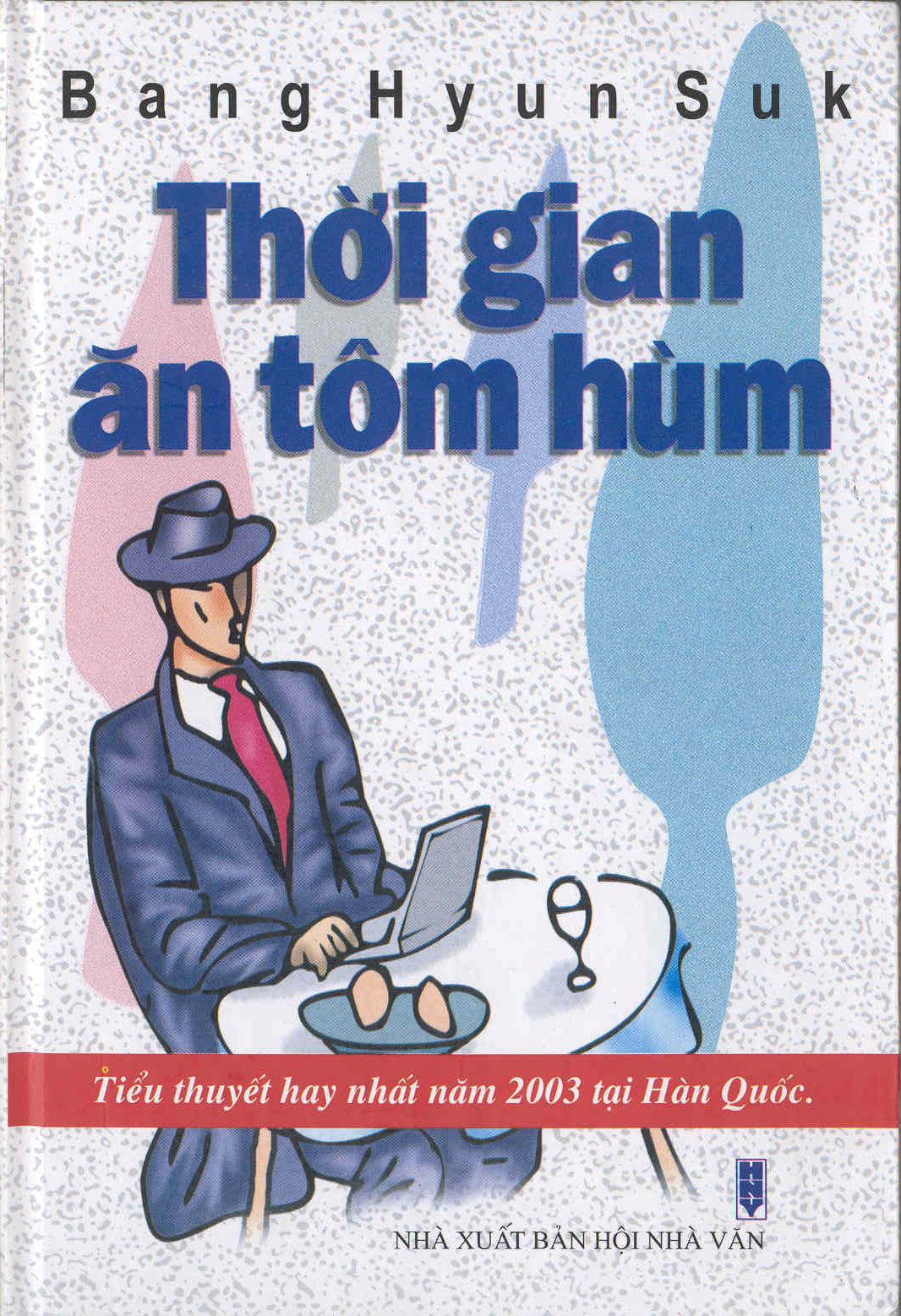
Fiction소설 | 랍스터를 먹는 시간(前 해외한국문학 연구지원사업 지원) Tho'I gian ăn tôm hùm
저자 방현석 ㅣ 역자 Ha Minh Thanh
출판사 Vietnam베트남 베트남작가동맹출판사 ㅣ 출판일 2004(2004 지원)
랍스터를 먹는 시간
방현석 作/ 하 밍 타잉 譯/ 베트남 작가동맹 출판사 刊
베트남을 무대로 한 방현석의 중편소설 「랍스터를 먹는 시간」과 「존재의 형식」이 베트남어로 번역되어 출간되었다. 이 두 작품은 한국어를 아는 베트남인들에게 깊은 감명을 주었을 뿐만 아니라 베트남 문단에서도 깊은 관심의 대상이 된 바 있다. 한국 현대소설이 베트남어로 번역, 출간된 것은 이번이 처음이다. 12월에는 작가와 번역자가 참가한 가운데 베트남 현지에서 출판을 기념하는 낭독회 등 다양한 행사가 펼쳐졌다. 현재 베트남에는 한국기업들이 많이 진출해 있고 한국 드라마, 패션 등에 관한 베트남인들의 관심도 매우 높아 이번 번역서 출간을 계기로 한국문학에 대한 관심도 더욱 커질 것으로 기대된다.
Thò’i gian ăn tôm hùm (Time to Eat Lobster)
Bang Hyun-Suk(Author)/Hà Minh Thành(Translator) /Vietnam: Vietnam Writers Federation,2004
Set in Vietnam, Hyun-seok Bang’s novellas Time to Eat Lobster and Mode of Existence have been translated into Vietnamese and published. These two works not only made a great impression on Vietnamese readers, but became the subjects of keen interest in Vietnamese literary circles as well. This is the first time a modern Korean novel has been translated into Vietnamese and published. Several events commemorating the publication have been held, such as a reading in Vietnam in December in which both the author and translator participated. Many Korean firms are operating in Vietnam, and as Vietnamese people are highly interested in Korean dramas, fashion, etc, it is hoped that the publication of this translation will increase the level of interest in Korean literature as well. -

Language어학 | 강독을 위한 한국고전문학(前 해외한국문학 연구지원사업 지원)
저자 ㅣ 역자 Hyun Won-Suk 현원숙
출판사 Russia 카자흐스탄 베델기획 ㅣ 출판일 2004(2003 지원)
강독을 위한 한국고전문학
현원숙 著, 베델기획 刊
러시아어 사용자들이 한국어를 효과적으로 배울 수 있도록 편찬한 한국어 강독 교재이다. 한국어와 함께 한국의 전통문화를 함께 이해할 수 있도록 하기 위해 단군신화, 바보온달, 콩쥐팥쥐, 심청전, 양반전, 별주부전, 호동왕자, 구운몽 등 8편의 한국 고전문학을 수록하였다. 러시아어권 국가에서 한국어를 가르치는 교사의 전문성이 낮은 현실에서 러시아어 강독 교재뿐만 아니라 문학 교재로서도 널리 활용될 것으로 기대된다. 서론에 한국문학과 한국 고전소설에 대한 설명을 싣고 있다. 본문에 수록된 8편의 작품은 ‘작가소개-이해와 감상-줄거리-본문-과제’의 순으로 되어 있다. 한국어를 가르치는 교사나 한국어과 대학생의 ‘작품 읽기’ 교재로 활용할 예정이다.
Classical Korean Literature for Readers of Korean as a Foreign Language
Kim Man-Jung et el. (Author)/Hyun Won-sook(Translator)/ Russia: 베델기획, 2004
This is a reading textbook for Russian speakers designed for effective learning of the Korean language. Eight classic Korean stories were gathered in order to facilitate the understanding of traditional Korean culture along with the Korean language. The stories are The Legend of Dan-kun, On-dal the Idiot, The Story of Kong-jui and Pat-jui, The Story of Shim-Cheong, The Story of the Noble Lord, Prince Ho-dong, and The Dream of Nine Clouds. The introduction contains an explanation about Korean literature and classic Korean short stories. Each story is treated in the order of ‘introduction of the author,’ ‘understanding and appreciation,’ ‘plot,’ ‘original text,’ and ‘exercises for the student.’ -
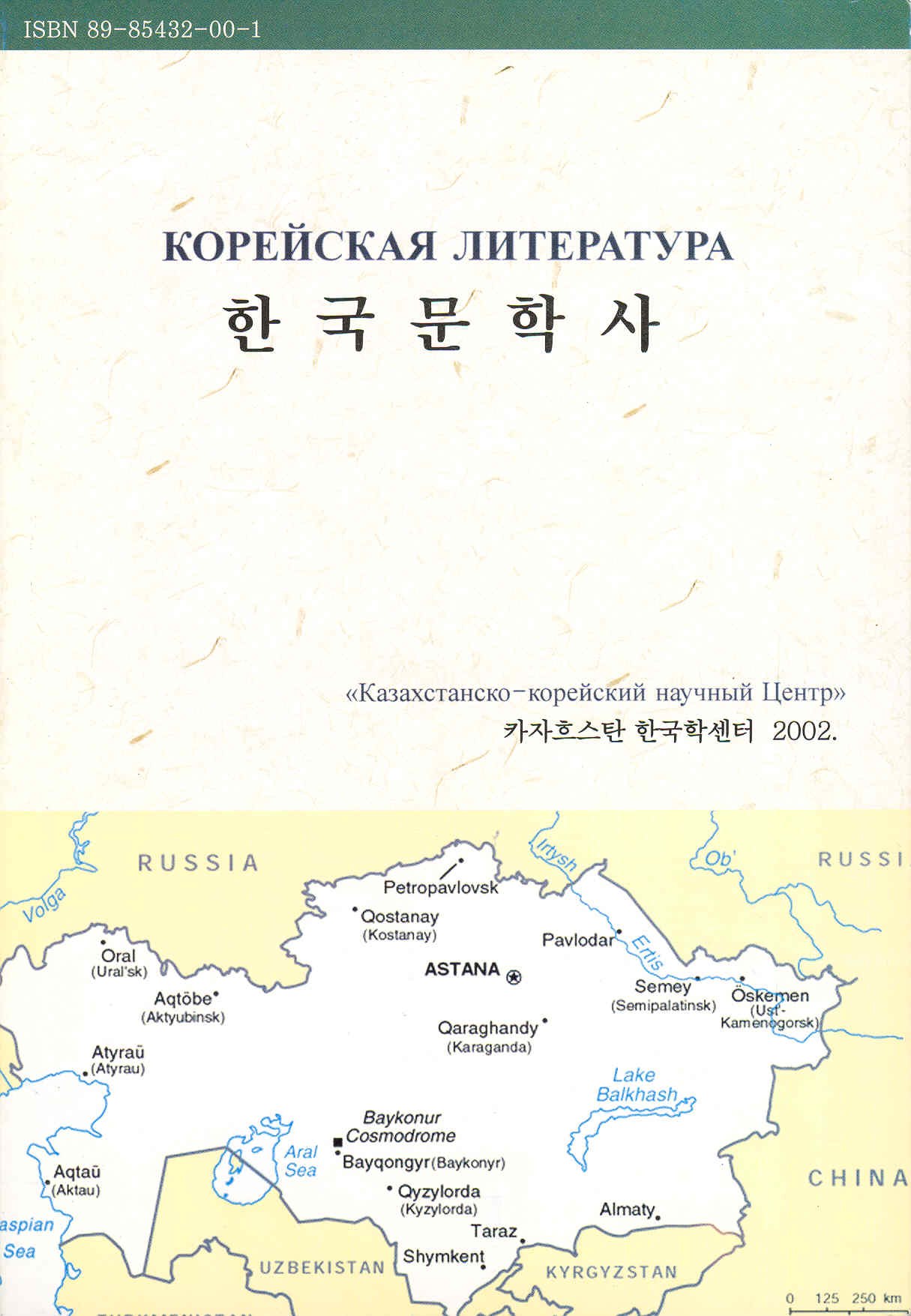
Lit.Theory문학사 | 한국문학사(前 해외한국문학 연구지원사업 지원) КОРЕЙСКАЯ ЛИТЕРАТУРА
저자 ㅣ 역자 Hyun Won-Suk 현원숙, 카자흐스탄 한국학센터
출판사 Kazakhstan카자흐스탄 알마티국립대 출판부 ㅣ 출판일 2002(2000 지원)
한국문학사 КОРЕЙСКАЯ ЛИТЕРАТУРА
현원숙 外 編譯, 카자흐스탄 한국학센터 刊
카자흐스탄 알마티국립대 한국학센터에서 펴낸 『한국문학사』는 외국인을 위한 한국문학사 교재라는 점을 감안하여 집필자들의 실제 강의자료들을 모아 전체적인 틀을 구성하는 등 한국문학 교재로서의 특수성을 살렸다. 고대문학부터 1960년대 이후 현대문학까지 한국문학사를 폭넓게 다루면서, 각 장마다 해당 시기의 대표적 문학작품을 번역하여 소개하거나, 원문의 일부를 수록하였다. 러시아어로 발간된 최초의 한국문학사로서 현지에 한국문학을 소개하고 한국학 전공자들에게는 한국문학사를 공부할 수 있는 좋은 교재가 될 것으로 보인다. 2000년 지원.
КОРЕЙСКАЯ ЛИТЕРАТУРА (The History of Korean Literature)
Hyun Won-Suk et al. (editor and translators)/ Kazakhstan Almati University Center for Korean Studies, 2002
In consideration of the fact that КОРЕЙСКАЯ ЛИТЕРАТУРА (‘History of Korean Literature’) addresses foreign students, editors differentiated their textbook by compiling actual notes from their own lectures to form the overall structure. Treating a broad time spectrum of ancient to post-1960 Korean literature, each chapter cites a translation or excerpt of a major work of the time, and as the first Korean history of literature book to be published in Russian, offers Korean studies majors the opportunity to learn more Korean Literature. -

Drama희곡 | 한국연극 1(前 해외한국문학 연구지원사업 지원)
저자 유치진 외 ㅣ 역자 김원석, 전정옥, Sergey Nilov
출판사 Russia러시아 국립연극아카데미출판사 ㅣ 출판일 2004(2002 지원)
한국연극 1
김원석,전정옥,세르게이 닐로프 共譯/러시아국립연극아카데미 刊
러시아어로 번역된 최초의 한국대표희곡집이다. 유치진의 「처용의 노래」, 함세덕의 「동승」, 오영진의 「맹진사댁 경사」, 윤대성의 「출발」 등 네 작품이 실려 있다. 유치진의 「처용의 노래」를 비롯한 한두 편이 이미 러시아 연출가들의 관심을 받고 있어 곧 러시아 연극무대에 올려질 수 있을 것으로 기대된다. 함세덕이나 오영진은 러시아의 로조프나 발로진 등과 비슷한 세대의 작가들이어서 주목받고 있다. 윤대성의 「출발」은 한국이라는 테두리를 벗어나 1960~70년대의 러시아를 비롯한 세계 희곡문학을 통해 제기된 시간과 공간, 신과 교회, 사랑과 죽음 등 다양한 문제들과 연관되어 있다.
Korean Plays 1
Yu Chi-Jin et el.(Author)/Kim Won-Suk, 세르게이 닐로프(Translators)/ Russia: The Russian National Academy of Theater ,2004
This is the first collection of significant works of Korean drama to be translated into Russian. The collection contains four works - Yu Chi-Jin’s Song of Chu-yong, Ham Se-Dok’s Boy Monk, Oh Young-Jin’s Auspicious Event at the House of Lord Maeng, and Yun Dae-seong’s Departure. Song of Chu-yong, along with some of his other works, has already attracted the interest of some Russian producers, and is expected to open on the Russian stage soon. Ham Se-dok and Oh Young-Jin are writers of a similar generation as Russia’s 로조프, 발로진 and others, and thus are being noticed. Yun Dae-Seong’s Departure transcends Korean boundaries, and grapples with time and space, God and church, love and death, and other problems raised by Russian and world playwrights in the 1960’s. -
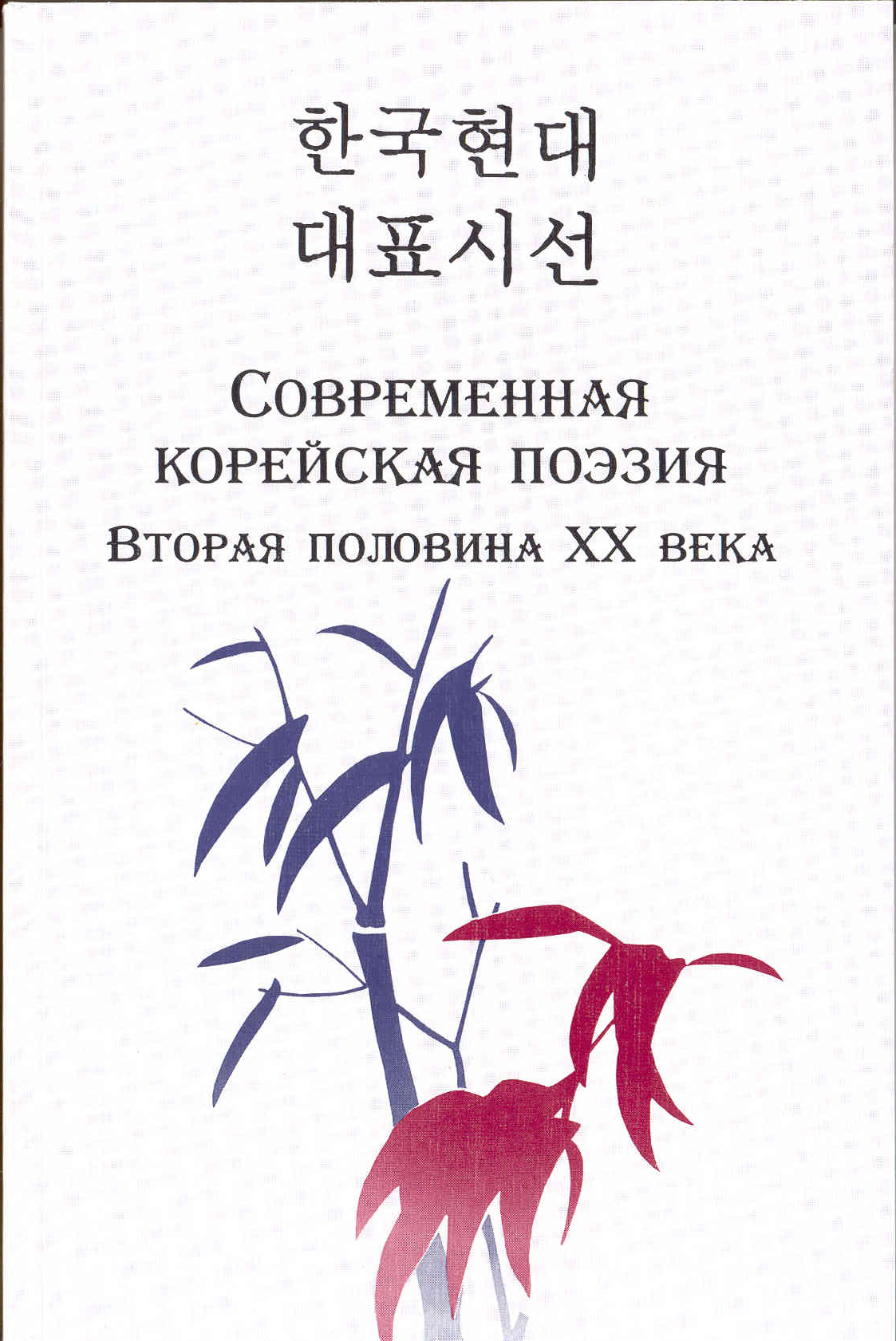
Poetry시 | 한국현대대표시선(前 해외한국문학 연구지원사업 지원)
저자 김광섭 외 ㅣ 역자 Larisa Pisareva, 김현택
출판사 Russia모스크바세계문학연구소 ㅣ 출판일 2004(2001 지원)
한국현대대표시선 Major Works of Modern Korean Poetry
라리사 피사레바,김현택 譯/ 러시아 모스크바 세계문학연구소 刊
러시아에서 출간된 첫 번째 한국현대시선집이며 러시아 독자들에게 한국 현대시의 다양한 경향을 선보일 것으로 기대된다. 이 번역서에는 김광섭, 김현승, 신동엽, 조병화, 김춘수, 김남조, 신경림, 고은 등 한국의 현대 시인 34명의 대표시 79편이 실려 있다. 러시아 주요 도시의 대형 도서관을 비롯하여 재러한국대사관 문화센터, 모스크바 삼일문화원 등을 통해 시선집을 적극 홍보하고 있으며 한국학과가 설치된 러시아 대학교에서 교재로 사용할 수 있도록 노력하고 있다.
Major Works of Modern Korean Poetry
Kim Kwang-sub et el.(Author)/ Kim Hyun-taek, 라리사 피사레바(Translators) / Russia : Moscow Institute for World Literature ,2004
This is the first collection of Korean poetry to be published in Russia. It is expected to provide Russian readers with an introduction to the various trends in modern Korean poetry. There are 79 representative poems of 34 modern Korean poets, including Kim Kwang-Sub, Kim Hyun-Seung, Shin Dong-Yeob, Jo Byoung-Hwa, Kim Chun-Su, Kim Nam-Jo, Shin Kyoung-Lim, Ko Un, and others. The collection is being actively marketed, starting with the large libraries in major cities, and through the Cultural Center of the Korean Embassy in Russia, the Moscow Sam-il Center of Culture, and others. Efforts are also being made to have the collection used as a textbook in Korean Studies Departments at universities in Russia. -
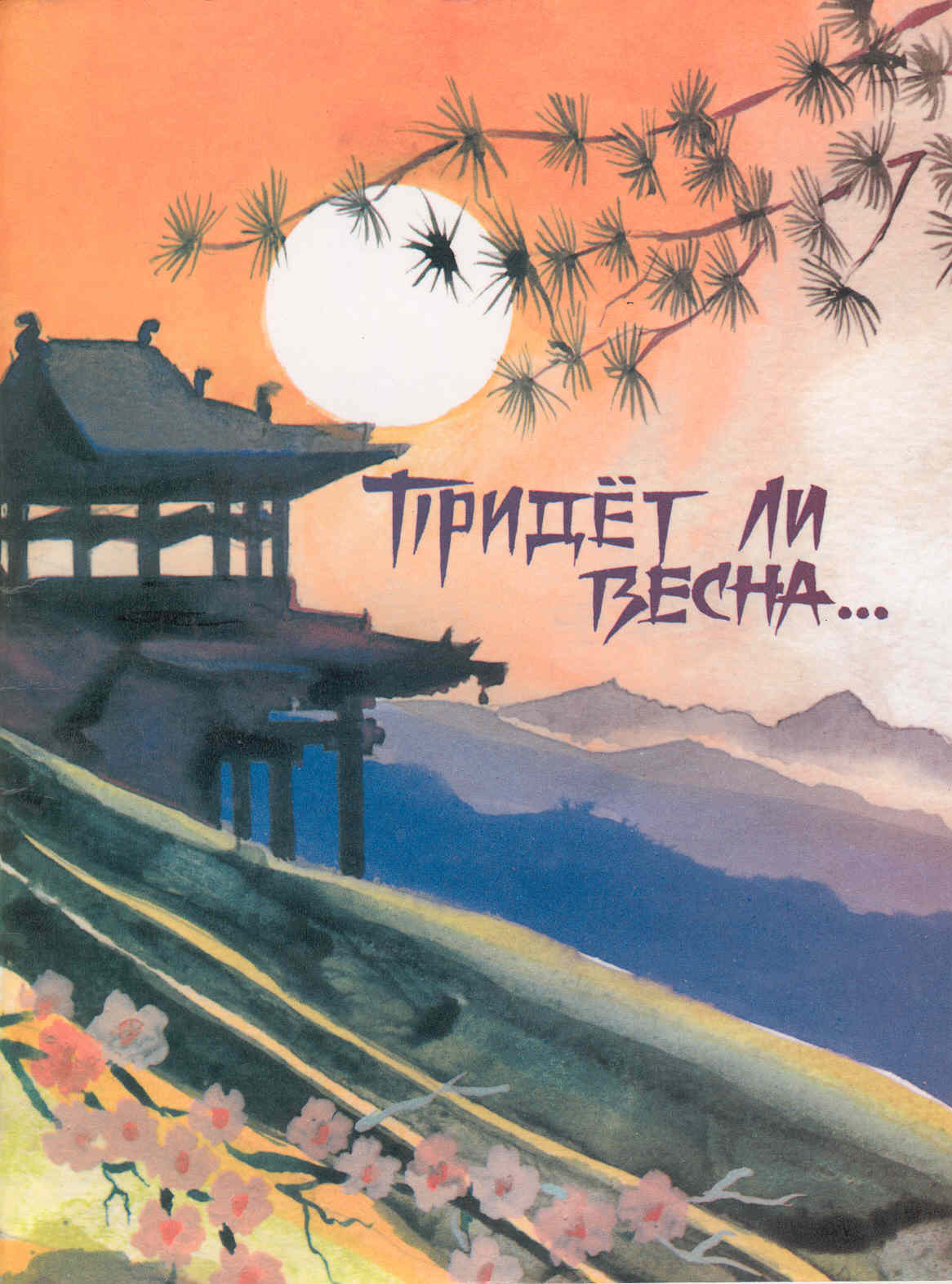
Poetry시 | 봄은 오는가 (한국현대시선집)(前 해외한국문학 연구지원사업 지원) Придёт ли весна
저자 이육사 외 ㅣ 역자 Amanova Gulistan
출판사 Uzbekistan우즈베키스탄 Karakalpakstan ㅣ 출판일 2003(2002 지원)
봄은 오는가 Придёт ли весна……
아마노바 굴리스탄 譯/ 우즈베키스탄 카라칼파크스탄 刊
우즈베키스탄에서 처음으로 출판된 한국현대시선집이다. 윤동주, 이육사, 이상화, 한용운, 조지훈, 서정주 등 17명의 시인들의 대표작 51편이 러시아어로 번역돼 실려 있다. 역자는 각 시인들에 대한 소개와 함께 한국 현대시에 대한 전반적인 설명을 곁들여 중앙아시아 독자들이 한국 현대시를 이해하는데 도움을 주고 있다. 시집 제목인 '봄은 오는가'는 이상화의 시 「빼앗긴 들에도 봄은 오는가」에서 인용했다. 2002년 지원.
Придёт ли весна... (Does Spring come?)
Yun Dong-Ju et al. (Authors)/ Amanova Gulistan (Translator)/ Uzbekistan: Karakalpakstan, 2003
Fifty one seminal works by 17 poets such as Yun Dong-Ju, Yi Yook-Sa, Lee Sang-Hwa, Han Yong-Woon, Jo Ji-Hoon, and Seo Jeong-Ju, compose this first Russian anthology of modern Korean poetry to be printed in Uzbekistan. Introductions to poets and an overview of modern Korean poetry by the translator provide readers from central Asia a quick synopsis. The title, Придёт ли весна... (‘Does Spring come’), derives from the poem Does Spring Come to Stolen Fields? by Yi Sang-Hwa. -
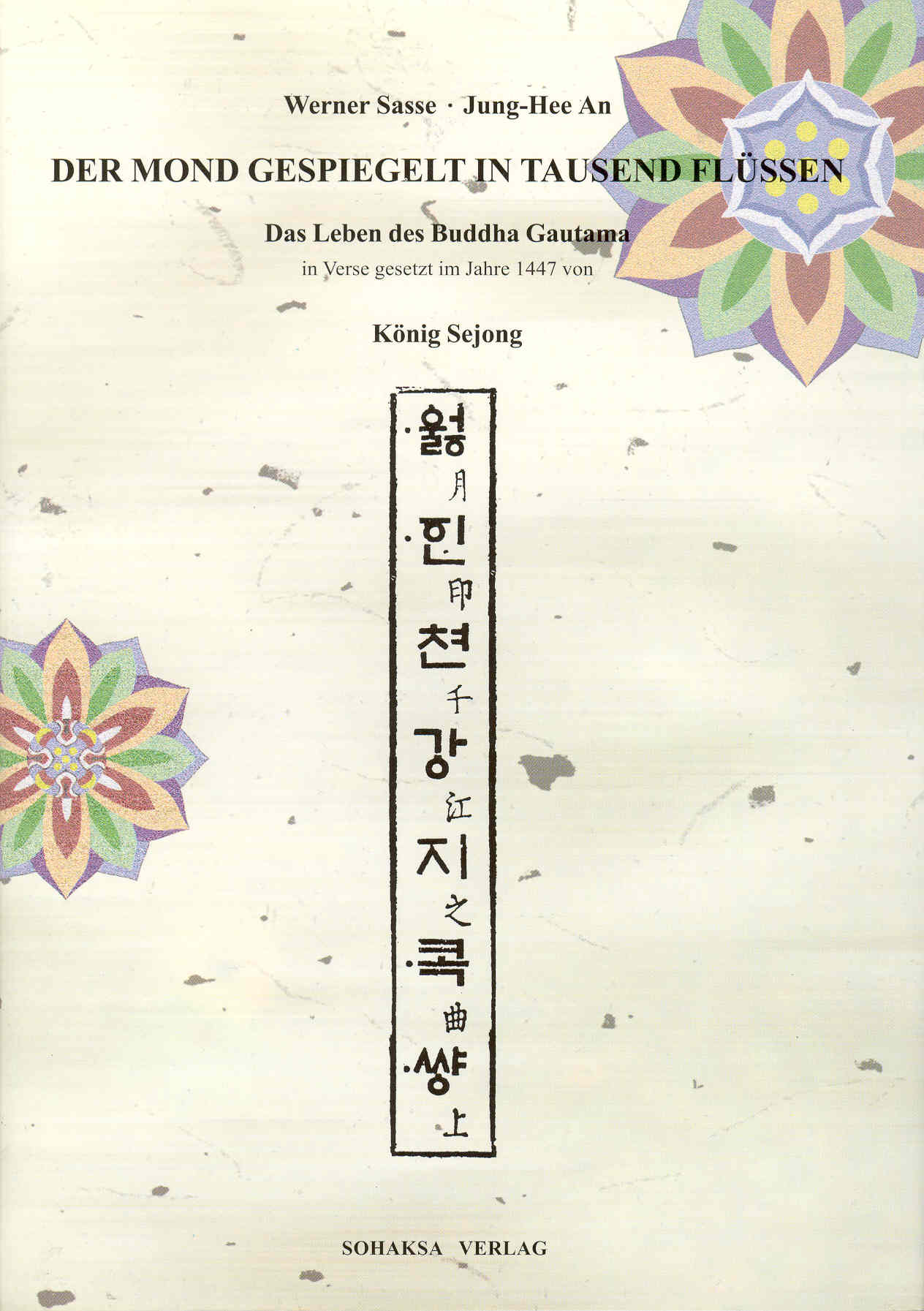
Classic고전 | 월인천강지곡(前 해외한국문학 연구지원사업 지원) Der Mond Gespiegelt in Tausend Flüssen
저자 세종대왕 ㅣ 역자 Werner Sasse, Jung-Hee An 안정희
출판사 Korea한국 소학사 ㅣ 출판일 2002(1996 지원)
월인천강지곡 Der Mond Gespiegelt in Tausend Flüssen
세종대왕 著/ 베르너 삿세,안정희 共著/ 소학사 刊
독일 함부르크대학의 베르너 삿세(Werner Sasse) 교수와 안정희 교수가 공동 작업하여 5년여 만에 이루어낸 결과물이다. 양장본 신국판으로 총 5백2쪽에 달하는 이 책에는 '월인천강지곡' 194연에 대한 독일어 번역, 해설과 더불어 중세국어의 어휘, 어법 등 언어학적 연구가 망라되어 있어 외국어로의 첫 번역이라는 의미를 넘어서 중세 한국어문학연구에 큰 성과를 거둔 것으로 평가할 수 있다. 해외에 최초로 소개되는 중세한국어 교재인 만큼 중세문학 및 훈민정음 창제 후 조선초기의 언어연구 자료로 크게 활용될 것으로 보인다. 1996년 지원.
Der Mond Gespiegelt in Tausend Flussen
König Sejong (Author)/ Werner Sasse, Ahn Jung-hee (Translators)/ Korea: Sohaksa, 2002
After five years of research, Professors (Universität Hamburg) Werner Sasse and Ahn Jung-Hee published their magnum opus, a hardcover edition numbering 502 pages and including the German translation and interpretation of the 194 stanza Wolinchongangjigok (The Moon Shines on A Thousand Rivers), as well as a complete analysis and contextualization of the 15th century grammatical forms, entitling their book as both a literary and linguistic achievement, and not simply the first foreign translation of this text. As it is the first textbook on medieval Korean introduced abroad, it will present a great source of material for research on medieval literature and post-Hun-Min-Jung-Um Chosun linguistic study. -

Lit.Theory문학사 | 한국근대문학과 일본(前 해외한국문학 연구지원사업 지원)
저자 사에구사 도시카쓰 三枝壽勝 ㅣ 역자
출판사 Korea한국 소명 ㅣ 출판일 2003(2001 지원)
한국 근대문학과 일본
사에구사 도시카쓰 외 著/ 소명출판 刊
이 책은 동경외국어대 사에구사 도시카쓰(三枝壽勝) 교수의 정년퇴임 기념논문집이다. 일본에서 '조선문학연구회'를 이끌며 평생을 한국 근대문학 연구와 보급에 바친 사에구사 교수를 위해 한·중·일 3개국 연구자들이 집필에 참여했다. 한국 근대문학기의 작품과 작가에 대한 연구 논문이 주를 이루고 있으며 일본문학과의 비교문학적 관점에서 근대문학의 흐름을 조망하고 있다. 8월 22일에는 40여명의 한일 한국문학 연구자들이 참여한 가운데 출판기념회를 열기도 했다. 2001년 지원. -

Poetry시 | 한국인의 사랑 (한국현대시선집)(前 해외한국문학 연구지원사업 지원) Korean Love
저자 김소월 외 ㅣ 역자 Ruth Arazi, 박미영
출판사 Israel이스라엘 Hakibbutz Hameuchad ㅣ 출판일 2000(1999 지원)
Ahaba Korianit(Korean Love) 한국인의 사랑
루트 아라지,박미영 共譯/ 이스라엘 하키부츠 하메우하드 刊
김소월, 서정주, 김지하, 김남조, 한용운 등 한국 현대 시문단을 대표하는 시인 15명의 작품 중 한국인의 보편적인 '사랑'을 다루고 있는 60편의 시편이 히브리어로 번역, 소개되어 있다. 시집 곳곳에 한국의 산수화, 민속화가 들어있어 시의 정취를 배가시키고 있다. 건국대 히브리학과 교수인 루트 아라지(Ruth Arazi) 교수와 번역가 박미영씨가 번역하였으며, 작품의 선정에 있어서는 '한국-이스라엘 여성협회' 이사인 문정희 시인, 서울대 오세영 교수 등이 참여했다. 1999년 지원.
Ahaba Koreianit (Korean Love)
Kim Sol-Wol, et al. (Authors)/ Ruth Arazi, Park Mi-Young (Translators)/ Israel: Hakibutz Hameuhad, 2000
First to be translated into Hebrew and published in Israel, Ahaba Koreianit documents 60 poems by 15 poets (Kim So-Wol, Seo Jeong-Ju, Kim-Ji-Ha, Kim Nam-Jo, etc) representative of current poetry in Korea. Selections by the director of the Korea-Israel Women’s Association, poet Mun Jong-Hee, and the Seoul National University Professor, Oh Sae-Young, includes Han Yong-Woon’s Obedience, Kim So-Wol’s Azaleas, Seo Jeong-Ju’s Deep Blue Sky, and Kim Chun Su’s Flower, mainly concerned with the love of the Koreans. The 18 pieces of Korean landscape and folk paintings from the National Museum of Korea collection doubles the ethnic appeal. Brief biographies and introductions to works comprise the latter half of the volume. -

Fiction소설 | 난장이가 쏘아올린 작은 공(前 해외한국문학 연구지원사업 지원) Malkata Topka, Izhvarlena ot Dzudzeto
저자 조세희 ㅣ 역자 Gwon-Jin Choi 최권진, Boyko Pavlo
출판사 Bulgaria불가리아 Sema RSH ㅣ 출판일 2000(1999 지원)
난장이가 쏘아올린 작은 공 МАΛΚΑΤΑ ΤΟПКА, ХВЪРΛΕΗΑ ΟΤ ДЖΕΤΟ
조세희 作 / 최권진, Boyco Pavlov 譯/ 불가리아 세마 르쉬(UK СЕМА РШ) 刊 ,2000
이 소설은 1970년대 산업화에서 밀려난 도시 빈민의 참상을 우화적으로 그린 조세희의 연작소설이다. 아버지가 난장이인 한 가족의 이야기가 큰아들 영수(1장), 작은아들 영호(2장), 딸 영희(3장)의 눈을 통해 전개된다. 이 소설은 도시화로 벼랑을 몰린 최하층민의 처참한 생활상과 노동환경, 주거문제 등이 여러 가지 상징적인 언어로 담겨져 있다. 난장이로 표현된 아버지는 아무리 열심히 일해도 착한 사람이 살아갈 수 없는 세상이라면 달나라로 떠나야 한다며 굴뚝에 올라갔다가 결국 죽고 만다. 이 소설은 1980년대에 노동운동과 학생운동의 텍스트로 이용되며 1978년 초판 출판 후 26년간 필독서의 자리를 지키고 있다. 이 책의 출판은 한국,불가리아 수교 10주년 기념사업으로 진행된 것이라 더욱 뜻깊다. 작품에 묘사된 한국의 사회상이 불가리아가 겪고 있는 사회변혁의 과정과 유사하여 현지 독자들의 공감을 얻고 있다고 한다.
МАΛΚΑΤΑ ΤΟПКА, ХВЪРΛΕΗΑ ΟΤ ДЖΕΤΟ (A Dwarf Launches a Little Ball)
Cho Se-Hui (Author)/ Choi Gwon-Jin, Boyko Pavlov (Translators)/ Bulgaria: СЕМА РШ, 2000
The book describes, in the style of the serial novel, a fable of the urban destitute cast out and made wretched by industrialism of the 70’s. The story unfolds on a family with a dwarfish father, narrated through the eyes of the eldest son Youngsu (chapter one), younger son Youngho (chapter 2), and the daughter Younghee (chapter 3). Various symbolic languages encompass the miserable living and work conditions of the low class pushed to the edges of urbanization. The father, referred to as a ‘dwarf,’ climbs the chimney to ‘escape to the moon,’ lamenting of a world where good people cannot survive no matter how hard they work, dies in the end. Commonly credited as a text on the labor and student movement of 1980, this novel has established itself as required reading for 26 years since its first publication in 1978. The book is made even more meaningful published as a commemorative project marking the ten years of Diplomatic relations between Korea and Bulgaria. Due to the similarities between the Korea portrayed, and the process of social reform experienced in Bulgaria, the book is expected to find welcome from native readers. -

Children아동문학 | 한국전래동화(前 해외한국문학 연구지원사업 지원) Korejské Pohádky
저자 ㅣ 역자 Pucek Vladimir
출판사 Czech체코 Aventinum ㅣ 출판일 1997(1996 지원)
한국의 동화 Korejské Pohádky
블라디미르 푸체크 譯/ 체코 아벤티눔(Aventinum) 刊
체코의 저명한 출판사인 아벤티눔사에서 국배판 양장본으로 2천부가 발행되었으며 ‘청개구리’, ‘흥부 놀부’, ‘개와 고양이’ 등 우리에게 친숙한 전래동화, 전설, 우화 등 34편을 수록하고 있다. 원색적이고 화려한 삽화를 풍부하게 곁들인 동시에 한국의 지형, 종교, 생활문화 등에 대한 자세한 설명을 포함하고 있어 한국문화에 스며있는 지혜와 해학을 보다 친숙하게 접할 수 있게 했다.
Korejské Pohádky (Korean Handed-Down Tales)
Vladimir Pucek (Translator)/ Czech: Aventium, 1997
The prominent Czech publisher Aventium printed 2000 hardcover editions for domestic distribution, each volume containing 34 well-known legends, fables and traditional tales including Tree Frog, Heungbu Nolbu, and Cat and Dog. Sumptuous pictures in vivid colors and detailed explanations on Korean topography, religion, and living customs furnish this accessible book on Korean wisdom and wit. -

Poetry시 | 님의 침묵(한용운시선집)(前 해외한국문학 연구지원사업 지원) Tvoje Mlceni
저자 한용운 ㅣ 역자 Ivana Maire Gruberova
출판사 Czech체코 Damagaia ㅣ 출판일 1996(1995 지원)
Tvoje mlčeni (Your Silence)
Han Yong-Woon (Author)/ Ivana M. Gruverová (Translator)/ Czech: DhamaGaia, 1996
Forty-nine poems including Nim’s Silence and Obedience, representative of Han Yong-Woon, greets Czech readers in pocket-book format. It opens with the translator’s preface, and the explication The Love Poetry of Monk Man-Hae Han Yong-Woon based on a thesis forwarding not just the translator’s subjective interpretations but also various influential critics’ such as Song Wook, Oh Sae-Yong and Kim Yong-Jik for an open reading of Han Yong-Woon’s poetic world. The poet and monk Han materialized the Buddhist nim (object of love, dear, title of respect) as nature, rejecting decadent lyricism, and instead, through his masterly metaphor, advocated salvation by national mentality and Buddhism against the Japanese rule. -

Drama희곡 | 이강백희곡집(前 해외한국문학 연구지원사업 지원) Lee Kang-Baek DRAMATY
저자 이강백 ㅣ 역자 Ewa Rynarzewska
출판사 Poland폴란드 Pod Wiatr ㅣ 출판일 1997(1996 지원)
이강백희곡집 Lee Kang-baek: Dramaty
이강백 作 / 에바 리나제흐스카 譯/ 폴란드 포드비아트르 (Pod Wiatr) 刊
동구권에서 최초로 소개된 한국 단일작가의 희곡집인 이 책은 이강백 작품 세계의 특징을 대변하는 작품 ‘결혼’, ‘북어대가리’ 등을 비롯한 주요 희곡 5편과 함께 그의 작품세계에 관한 역자의 논문을 담고 있다. 이강백은 우화와 비유로 충만한 비사실주의 작품을 주로 써서 ‘알레고리의 작가’라고 불리기도 한다. 작품세계는 인간의 실존적 고뇌를 정교한 논리로 구성한 것이 특색이다. 특히 이 희곡집은 폴란드 번역문학상의 하나인 비톨드 훌레비츠번역상을 수상하여 번역물로서의 작품성도 인정받았다.
Lee Kang-baek: Dramaty(Dramas of Lee Kang-Baek)
Lee Kang-Baek (Author)/ Ewa Rynarzewska (Translator)/ Poland: Pod Wiatr, 1997
First drama selection by a sole Korean writer introduced in Eastern Europe, includes the translator’s thesis on the author’s works the likes of Getting Married and Dried Pollack Head--five plays that best display Lee Kang-Baek’s traits. Christened ‘writer of allegory’ for his non-realist writing heavy in fable and metaphor, Lee is distinguished for his dialectic of existential anguish. Winner of the Polish Witold Hulewicz Translation Award, in recognition of its outstanding substance, Lee Kang-Baek’s artistic vision is evident even as a translation. -

Fiction소설 | 제 3의 현장 (前 해외한국문학 연구지원사업 지원) Interno Coreano con Seqvestro
저자 이청준 ㅣ 역자 Antonetta Bruno
출판사 Italy이탈리아 O Barra O Edizioni ㅣ 출판일 2001(2000 지원)
그 노래 다시 부르지 못하네(제 3의 현장)Interno Coreano con Sequestro
안토네타 브루노 譯, 이탈리아의 오바라오 刊
오바라오 출판사의 아시아시리즈 중 한국시리즈로 출판된 이 책은 이탈리아에 처음 소개되는 이청준의 작품으로 그간 작가가 끊임없이 탐구해 온 말의 탐구, 권력의 속성, 진정한 이해와 용서의 어려움 등을 담고 있다. 오바라오 출판사가 이청준 작품 중 이 소설을 첫 번째로 택한 이유는 이 소설에 이청준 특유의 문학세계가 잘 나타나 있기 때문이라고 한다. 이 소설은 오늘날 윤리학의 근간을 이루는 타자의 문제를 다루고 있기도 해 한국이라는 국가적 경계를 넘어 이탈리아인들에게 한층 더 가까이 다가설 수 있을 것으로 기대되고 있다. 2000년 지원.
Interno Coreano con Sequestro (The Third Scene)
Yi Chong-Jun (Author)/ Antonetta Bruno. (Translator)/ Italy: O Barra O Edizioni, 2001
Printed as part of the O Barra O series Korea from the Asia series, and first Yi Chong-Jun to be published in Italy, Interno Coreano… embodies the author’s endless exploration of-among other things-speech, properties of power, true understanding and the difficulty of forgiveness. O Barra O chose this particular book among Yi’s works for it highly reflects the author’s imaginative world. Inspired from a Verdi sung by Nana Mouskouri he heard on his travels, it aims to explain his theory on the system of grammar: the story concludes that public accounts dependent on reason, and confessions of heart relying on emotion, are interdependent phraseology, and at the same time, addresses the basis of today’s ethics by treating the question of the other. -

Lit.Theory문학사 | 한국문학사(前 해외한국문학 연구지원사업 지원) Storia Della Leteratura Coreana
저자 Maurizio Riotto ㅣ 역자
출판사 Italy이탈리아 Novecento ㅣ 출판일 1997(1995 지원)
Storia Della Letteratura Coreana (History of Korean Literature)
Maurizio Riotto(Author)/ Italy: Novecento,1997
This book is a complete history of Korean literatyre, as studied and written by the Italian scholar of Korea at the University of Napoli(Department of Asian studies), Professor Riotto. Spanning classical Korean literature to Joseon, and modern-contemporary literature, it compiles and defines a comprehensive body of research on characteristics inherent in a work as well as its literary context. The structure is chronological. It carries the introduction and translation of the major work for each period starting from the origin of the Korean people and their literature Since its publication in Italy, Sotoria Della Letteratura Coreana has received close attention from the media and the literary world, and its utilized as and excellent textbook on Korean studies, even today. -

Language어학 | 재밌다, 한국어 1(前 해외한국문학 연구지원사업 지원) Vui Hoc Tieng Han 1
저자 이수미 ㅣ 역자
출판사 Vietnam베트남 하노이국립출판사 ㅣ 출판일 2000(2000 지원)
재밌다! 한국어 Vui Học Tiêńg Hân 1
이수미(Lee Su-Mi) 著 / Hanoi University Press 刊
베트남 하노이국립대의 한국어 강사인 이수미씨가 집필한 한국어 교재이다. 한국과의 교류가 활발해지고 있는 베트남인들의 한국어 회화 습득을 위한 초급교재로서 자주 쓰이는 기본 문장을 위주로 설명하고 있다. 베트남어로 독해하고 단어를 습듭할 수 있도록 한국어 예문을 수록하고 있어 대학에서 회화교재로 쓰이고 있다.
Vui hoc tieńg Han ! (Fun, Korean!)
Lee Su-Mi (Author)/ Vietnam: Hanoi University Press, 2001
The author Lee Su-Mi teaches Korean at Vietnam’s Hanoi University. Written and used as a primer for Viets increasingly in contact with Korea, this book revolves around basic phrases commonly used for learning conversational Korean. Korean sentence examples aid the reading (in Vietnamese) and attainment of words. -

Language어학 | 한국어 1(前 해외한국문학 연구지원사업 지원) Bahasa Korea
저자 류승완, 김승현 ㅣ 역자
출판사 Malaysia말레이시아 국립대 ㅣ 출판일 2003(1999 지원)
한국어 BAHASA KOREA
류승완,김금현 共著/ 말레이시아국립대학교 刊
말레이시아어로 된 최초의 한국어 교재가 출간됐다. 한글 자음과 모음으로 시작하여 기본적인 인사말과 회화, 문법 등 한국어 기초과정으로 구성되어 있다. 말레이시아국립대학에 한국어 과정이 개설된 지 15년이 지났지만 현재까지 대학에서 사용되는 한국어 교재는 주로 영어로 된 것이었다. 따라서 이 책은 체계적인 한국어 교육 뿐만 아니라 한국 문화를 알리고 양국간 교류를 증진하는 데에도 많은 도움이 될 것으로 기대된다. 말레이시아국립대를 비롯 한국어 과정이 개설된 말레이시아 4개 대학이 이 책을 한국어 교재로 사용하고 있다. 저자들은 중급 및 고급과정 교재도 순차적으로 출간할 예정이다. 1999년 지원.
BAHASA KOREA(Korean Languge)
Rou Seung-Yoan, Kim Keum-Hyun (Authors)/ Malaysia: Universiti Kebangsaan Malaysia, 2003
Prime Korean language instructions book to be written in Malaysian, Korean consonants and vowels, basic greetings and conversation, and grammar, constitutes an elementary course. English textbooks on the Korean language were previously used although the University has had a Korean curriculum for over 15 years. Current schools with such a curriculum are as follows: Universiti Kebangsaan Malaysia, Universiti Malaya, Universiti Putra Malaysia, Universiti Teknologi Mara. These four universities now utilize BAHASA KOREA as their textbook since first semester (June) 2003. -

Lit.Theory문학사 | 한국문학개론 Introduction to Korean Literature
저자 김도영 ㅣ 역자
출판사 India인도 Manas ㅣ 출판일 2002(2000 지원)
한국문학개론 Introduction to Korean Literature
김도영 著/ 인도 마나스 刊
인도 네루대의 김도영 교수가 집필한 이 책은 인도에서 최초로 발간된 한국문학 입문교재이다. 고대에서부터 현대 소설, 비평에 이르기까지 한국문학사를 망라한 이 책은 시대별 문학사 소개와 함께 「구지가」 「황조가」에서부터 「양반전」 「홍길동전」 「절정」 「향수」 「무정」 「동백꽃」에 이르기까지 각 시대를 대표하는 작품에 대한 번역과 해설을 싣고 있다. 힌디어 사용자가 누구나 쉽게 한국문학을 이해하고 수용할 수 있도록, 한국어, 영어, 힌디어로 구성되어 있는 것이 특징이다. 2000년 지원.
Introduction to Korean Literature
Kim Do-Young (Author)/ India: Manas, 2001
Jawaharlal Nehru University’s Kim Do-Young writes the first Korean Literature book published in India, a primer on literary history ranging from ancient to current novel and criticism with a translation and explanations on major period pieces like Song of Guji, Song of Hwangjo, Tale of Yangban (satire of Confucian scholars), Tale of Hong Gil-Dong, Perfume, Mujeong (heartlessness), and Camellia. Bound in Korean, English and Hindi, any Hindu learner will find Korean Literature accessible with this edition. -

Classic고전 | 한국의 전래동화 Korean Folk Tales(前 해외한국문학 연구지원사업 지원)
저자 ㅣ 역자 Divic Rameshi
출판사 India인도 Pitambar ㅣ 출판일 2000(1996 지원)
한국의 전래동화 Korean Folk Tales
Divik Ramesh 譯/ 인도 피탐바(Pitambar) 刊
인도의 시인인 델리대학의 디빅 라메시 교수가 번역하여 현지의 저명한 아동문학 출판사인 피탐바출판사에서 발간하였다. ‘청개구리’, ‘장화홍련전’, ‘단군이야기’, ‘나무꾼과 선녀’ 등 우리에게 친숙한 전래동화, 전설, 우화 등 14편을 수록하고 있으며 특히, 인도에서 발간된 만큼 김수로왕과 아유타국 공주 허황옥의 이야기를 수록한 점이 눈길을 끈다. 인도에 처음 소개된 한국의 동화로서 인도 독자들에게 한국문화에 대한 간접 경험의 기회를 제공하고 한국문화를 이해하는 기본바탕이 되고 있다.
Korean Folk Tales
Divik Ramesh (Translator)/ India: Pitambar, 2000
The Indian poet and Professor (University of Delhi), Divik Ramesh translated, and the locally renowned publisher of children’s literature, Pitambar, printed, 14 pieces of honored traditional tales, legends and fables including Tree Frog, The Tale of Janghwa and Hongryeon, Story of Dangun, and The Fairy and the Lumberjack Interesting for an Indian release is the addition of the tale of King Kim Su-Ro and Ayutthaya princess Huh Hwang-Ok (Yellow Jade). For Indian readers, this first volume of Korean folk tales opens the door of experience to Korean culture and understanding. -

Language어학 | 인도인을 위한 한국어(前 해외한국문학 연구지원사업 지원) Korean Language in India
저자 김도영 ㅣ 역자
출판사 India인도 Sterling ㅣ 출판일 1998(1996 지원)
인도인을 위한 한국어 교재 Korean Language in India
김도영 著/ 인도 스털링(Sterling) 刊
인도 최고의 국립대인 네루대 한국어학과의 김도영교수가 집필한 한국어 교재로 기초편과 독본, 두 권으로 꾸며졌다. 일상생활에서 쓰이는 가장 기본적이고 필수적인 회화와 단어를 한국어, 영어, 힌디어로 소개하고 있다. 각 과는 한국어, 영어, 힌디어 예문 및 단어 소개, 연습문제, 문법 설명 등으로 이루어져 있다. 기존의 미․일 계통 외국인 위주로 제작된 한국어 교재와 달리 실제 인도인의 언어습관에 맞춘 교재 개발에 초점을 두었다. 한국에 대한 관심이 급격히 고조되어 가고 있는 상황의 인도에서 현지인들이 한국어를 쉽게 배울 수 있는 교재로 널리 활용되고 있다.
Korean Language in India
Kim Do-Young (Author)/ India: Sterling, 1998
Written by Professor Kim Do-Young of department of Korean language, Nehru University, the top national university in India, this textbook divides into two volumes: elementary and supplementary. Concerned with the most basic and necessary everyday dialogue and words, lessons proceed in Korean, English and Hindi examples, words, exercises, and grammar explanations. Unlike previous Korean textbooks catering to American/Japanese learners, Korean Language in India centers on actual language practice of Indians. With interest in Korea rapidly on the increase, Indians widely use this text as a straightforward guide to learning the Korean Language.

